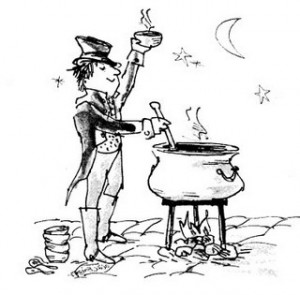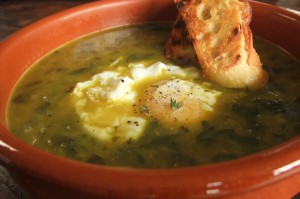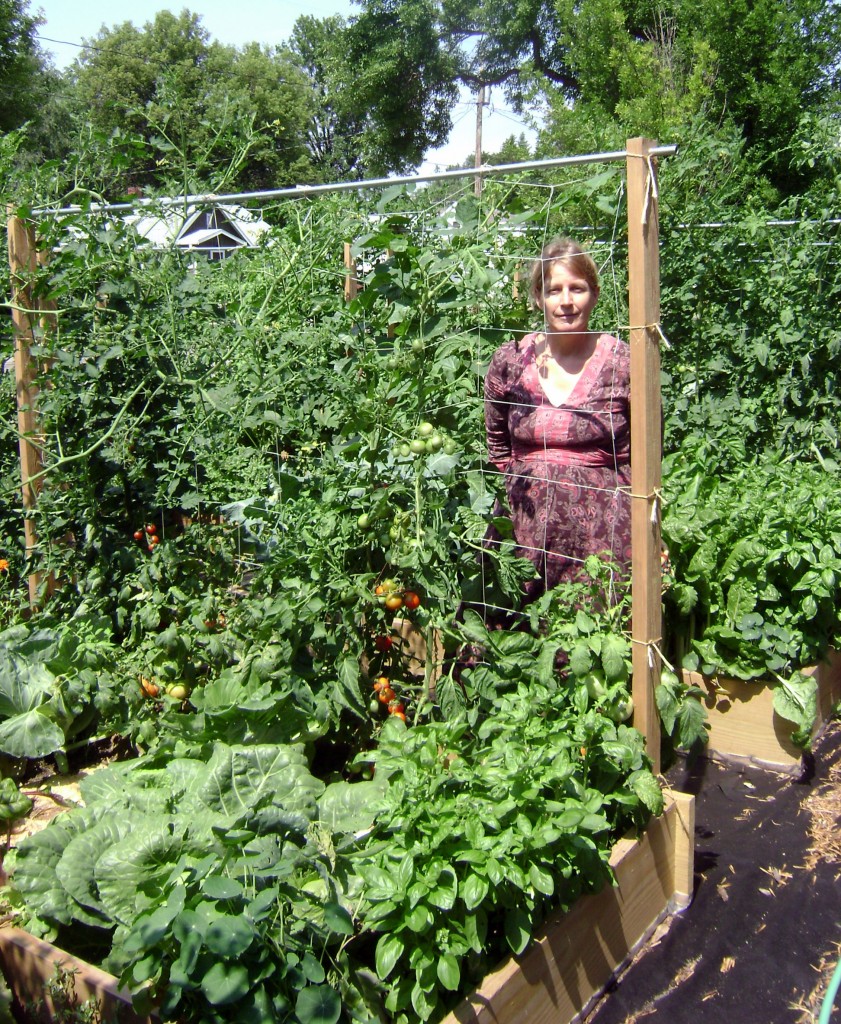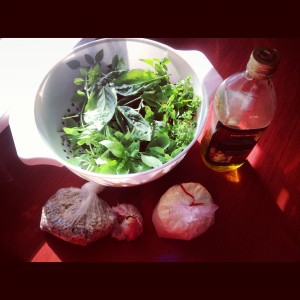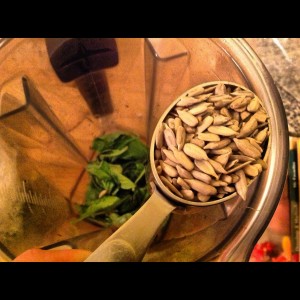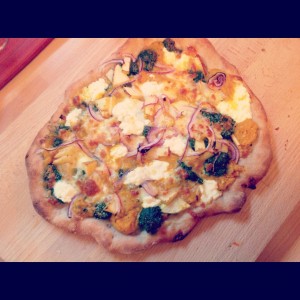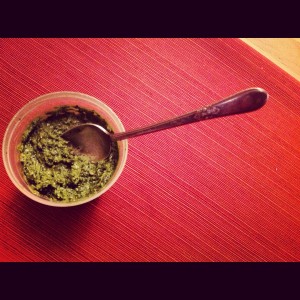
…… a slightly misleading post-title if there ever was one. Not misleading per se – just leaving out a huge part of the “discussion”. But then I couldn’t very well have put diarrhea and anxiety right there in the heading for all to see, could I? Or could I?…. Read on dear reader, read on. We’ll eventually get to the soothing foods.
 When anxiety hits, all kinds of psychological and medical symptoms can show up, some more severe than others, depending on the level of anxiety and the way in which it is, um, manifested in your body. In this post I’d like to address one of the symptoms that my body (and millions of other bodies on this planet) suffers, and a symptom that is a clear sign of anxiety and stress. This particular of symptoms being – ah, well – let’s just say it together folks: diarrhea. There. It’s been said twice in the very first few lines of this post. Out with it I say (no pun intended)! If you’re going to write about something just go ahead and write about it. As somebody who suffers from anxiety and anxiety-caused diarrhea in my own life, I’ve sought to understand what is going on, and to figure out how to deal with it so I can both help myself and others.
When anxiety hits, all kinds of psychological and medical symptoms can show up, some more severe than others, depending on the level of anxiety and the way in which it is, um, manifested in your body. In this post I’d like to address one of the symptoms that my body (and millions of other bodies on this planet) suffers, and a symptom that is a clear sign of anxiety and stress. This particular of symptoms being – ah, well – let’s just say it together folks: diarrhea. There. It’s been said twice in the very first few lines of this post. Out with it I say (no pun intended)! If you’re going to write about something just go ahead and write about it. As somebody who suffers from anxiety and anxiety-caused diarrhea in my own life, I’ve sought to understand what is going on, and to figure out how to deal with it so I can both help myself and others.
 Often the diarrhea phenomenon has to do with anticipation of some kind of performance. This kind of anxiety is normal. It’s perfectly normal to feel somewhat scared prior to a big event. Actually, this kind of anxiety is even helping us to prepare to meet the challenge at hand. Research has clearly demonstrated that having some anxiety enhances how we perform. However, if the anxiety gets too high then we run the risk of decreasing performance because we get to a point in which we become overwhelmed. Athletes and other performers learn to regulate this anxiety so that they can have just the right amount. If they don’t have any stress they won’t perform up to their potential. But if they have too much, it will interfere.
Often the diarrhea phenomenon has to do with anticipation of some kind of performance. This kind of anxiety is normal. It’s perfectly normal to feel somewhat scared prior to a big event. Actually, this kind of anxiety is even helping us to prepare to meet the challenge at hand. Research has clearly demonstrated that having some anxiety enhances how we perform. However, if the anxiety gets too high then we run the risk of decreasing performance because we get to a point in which we become overwhelmed. Athletes and other performers learn to regulate this anxiety so that they can have just the right amount. If they don’t have any stress they won’t perform up to their potential. But if they have too much, it will interfere.
 Unchecked anxiety can easily become overwhelming given the right high-pressure situation. Anxiety can cause the many systems in the body to undergo changes that may include an increase in heart rate, elevation of blood pressure, and slowing of the gastrointestinal activity. We may forget to eat, work ourselves into a psychological tizzy by dwelling too much on the source of our anxiety, be unwilling to let little daily annoyances go, or indulge feelings of negativity, all of which will only increase our stress level. These changes occur in preparation for the flight or fight response. When we get to that point, of feeling overwhelmed and super stressed-out, we are in danger of allowing both our bodies and our minds to endure a kind of melt-down. When we are feeling the stress, and close to some kind of collapse, it’s really important to stop, breathe, and pay attention to our bodies. We need to recognize that we are undergoing stress that has the capacity to bring us down in a not-so-graceful way, and if left unattended, may really cause problems with our overall health and wellbeing. It’s important to stop, try to put things in perspective, and to take care of ourselves.
Unchecked anxiety can easily become overwhelming given the right high-pressure situation. Anxiety can cause the many systems in the body to undergo changes that may include an increase in heart rate, elevation of blood pressure, and slowing of the gastrointestinal activity. We may forget to eat, work ourselves into a psychological tizzy by dwelling too much on the source of our anxiety, be unwilling to let little daily annoyances go, or indulge feelings of negativity, all of which will only increase our stress level. These changes occur in preparation for the flight or fight response. When we get to that point, of feeling overwhelmed and super stressed-out, we are in danger of allowing both our bodies and our minds to endure a kind of melt-down. When we are feeling the stress, and close to some kind of collapse, it’s really important to stop, breathe, and pay attention to our bodies. We need to recognize that we are undergoing stress that has the capacity to bring us down in a not-so-graceful way, and if left unattended, may really cause problems with our overall health and wellbeing. It’s important to stop, try to put things in perspective, and to take care of ourselves.
Which brings me back to diarrhea. While the causes of diarrhea are myriad, anxiety-caused diarrhea is a special case and I’ve come to understand that two things are happening simultaneously when anxiety-caused diarrhea sends you in the direction of the loo (hoping that using British-isms will distract from the frequency with which I write the word “diarrhea” in this post. Constipation anyone? ).
When anxiety hits, input from the brain sends a message to decrease digestion and input from the brain also simultaneously sends a message to increase motility of the colon, resulting in the rapid passage of incompletely digested food. Since digestion is not quite needed at a time when danger is felt, most of the blood supplying the digestive tract is routed to the muscles where it is needed the most, away from the digestive system. This whole process of fighting or flighting, of manifesting an anxious response to danger, slows down our normal digestive functions, thereby disrupting the absorption of water and all of the beneficial nutrients in our food in the large intestine. Quite simply, the process of digestion is badly affected because we are passing undigested food in an anxiety-ridden hurry that our bodies haven’t had a chance to properly deal with. We are missing out on the full nutritional value of our food.
So what can you do about this terrible churning and immediate distress? If you’re dealing with severe, uncontrollable anxiety, and have experienced multiple panic attacks and/or anxiety that lead to severe depression, you will want to seek help from a doctor or therapist. Don’t even worry about it! There is no shame in asking for help and this is what therapists and doctors are for. You might also seek help from yours truly, the Integrative Health Coach. I am trained to help in exactly this kind of situation and can aid you, step by step, in looking at all of the contributing factors to your anxiety, how it is affecting your health, and forging a new path of loving yourself both in, and outside of, the anxiety in your life.
And if this is something that you are dealing with and you are aware – you know the cause of your anxiety, can see its obvious impact on your daily life and your digestive system, and you are looking for in-home ways to help yourself, I’d like to suggest that actively nurturing yourself when these moments arrive, can be the soothing salvation you are looking for. Again, it’s time to stop, reflect, and care for yourself. The act of caring for ourselves when we are in distress can be just the powerful antidote that we need to put things in perspective and calm ourselves.
Light a candle. Cook some food.
Cook some food.
Here are 5 Soothing Foods to Light a Candle next to:
 Replace a Burger with Old-fashioned Chicken Soup
Replace a Burger with Old-fashioned Chicken Soup
Eating fatty foods while undergoing significant stress may trigger diarrhea due to the body’s reaction to external conditions. High fat foods can also exacerbate existing diarrhea. So light a candle, breathe deeply, put on some music, and make some chicken soup (see recipe at the end of this post). And if you are a vegetarian, make it miso soup. Chicken broth and miso broth are both clear fluids, which are essential for avoiding dehydration when suffering from diarrhea. They both provide protein and iron. And both contain tryptophan which is most commonly associated with turkey at Thanksgiving and the sleepy drowsiness that often follows the big meal. The truth is that tryptophan is in a lot of foods and it is actually a mood elevator because it converts to serotonin in the brain. Serotonin is the all-important neurotransmitter that, among other things, promotes feelings of relaxation and calmness and can help depression and anxiety, as well as digestion. Besides, what is more fundamentally relaxing and nourishing than preparing a comforting brothy soup?
 Replace Fried Greasy Carbs with Complex Carbohydrates like Squash
Replace Fried Greasy Carbs with Complex Carbohydrates like Squash
Starches like squash are also rich in tryptophan and can therefore also stimulate the release of serotonin, your feel-good brain chemical. The main thing here is that you want to nourish your body with complex carbs and stay away from the ones that hit your body with a rush of sugar and fat (e.g., French fries). Simple carbs turn to sugar quickly in your body, and can only increase your anxiety, especially if you are already anxious. Opt for whole grains, such as quinoa and oatmeal, which deliver more fiber and nutrients than refined ones. Other nutrient-rich carbohydrate choices include fruits–such as apples, bananas and melons–and vegetables, including starchy, root vegetables such as sweet potatoes, corn, carrots, broccoli and tomatoes.
 Replace Potato Chips with Dried Blueberries
Replace Potato Chips with Dried Blueberries
Reportedly, dried blueberries have a long history of use in Sweden as a treatment for diarrhea. The helpfulness of blueberries for diarrhea appears to be due to the fact that they contain tannins, which act as an astringent, contracting tissue and reducing inflammation and secretion of liquids and mucus. Blueberries also contain pectin, which is a soluble fiber that works against diarrhea by increasing the volume and viscosity of the waste. Pectin is actually an ingredient in several commercial diarrhea remedies. Pectin derived directly from fruits such as blueberries and apples, provides nutrient to beneficial bacteria in the colon and helps stimulate repair of damaged tissue.
 Replace Ice Cream with Yogurt
Replace Ice Cream with Yogurt
It is generally recommended that dairy products be avoided during acute diarrhea episodes. Yogurt is a major exception to this rule. Look for yogurt that contains live or active cultures, or more specifically Lactobacillus acidophilus and Bifidobacterium bifidum. These active cultures are probiotics and they help to establish a healthier balance of bacteria in the digestive tract that both soothe and nourish.
 Replace Coffee with Herbal Tea
Replace Coffee with Herbal Tea
While coffee can have its perks when consumed in moderation, now is not the time for increasing your heart rate and significantly elevating your cortisol levels. Cortisol is the hormone secreted by the adrenal glands when your body is experiencing stress. It has many functions, one of which is to prepare the body for fight or flight. You don’t need more cortisol. You are already experiencing stress. Now is the time to turn to a gentler tonic for the system. There are many herbs known for aiding digestion. And I can’t think of a more nourishing act (ok – I did mention soup earlier, didn’t I) than the preparation of a soothing cup of herbal tea. In particular, ginger, peppermint, and chamomile are known for their soothing qualities. Chamomile acts as one of nature’s most safe and effective sedatives and can relax the body and mind. Herbs in the mint family, especially spearmint and peppermint, add a refreshing flavor and mild sedative action to herbal teas. They are especially soothing to an upset stomach and digestive system. Since ancient times, ginger has a long tradition of being very effective in alleviating symptoms of gastrointestinal distress.
Speaking of ginger, here is that recipe for chicken soup, with the addition of this soothing spice:
 Gingered Chicken Soup
Gingered Chicken Soup
1 1-inch piece fresh ginger
2 medium cloves garlic, unpeeled
1 onion finely chopped
1 large carrot, chopped into small rounds
1 lb chicken thighs (with bone and skin)
1 Tbs. soy sauce
1 quart organic chicken broth
1 Tbs. fresh lime juice
1/4 cup packed fresh cilantro
2 Tbs. thinly sliced scallion (green tops only)
Real Salt
1 cup greens (spinach or swiss chard)
Peel the ginger and use a microplane zester (or any fine grater) to grate all of the ginger into a fine paste. Press in a garlic press or finely mince the garlic.
In a medium saucepan, combine the ginger, garlic, chopped onion, carrot rounds, chicken, soy sauce, and enough broth to just cover the ingredients. Bring to a boil over medium-high heat. Reduce the heat to low and gently simmer for 40 minutes. Using a pair of tongs, transfer the chicken to a plate. When cool enough to handle, take the chicken meat off of the bones. Return meat to soup pot.
Return the soup to a simmer and season with salt to taste.
Finely chop the cilantro.
Add the greens to the broth and continue to simmer until it’s wilted, 1 to 2 minutes more. Add the lime juice, cilantro, scallions and serve.





